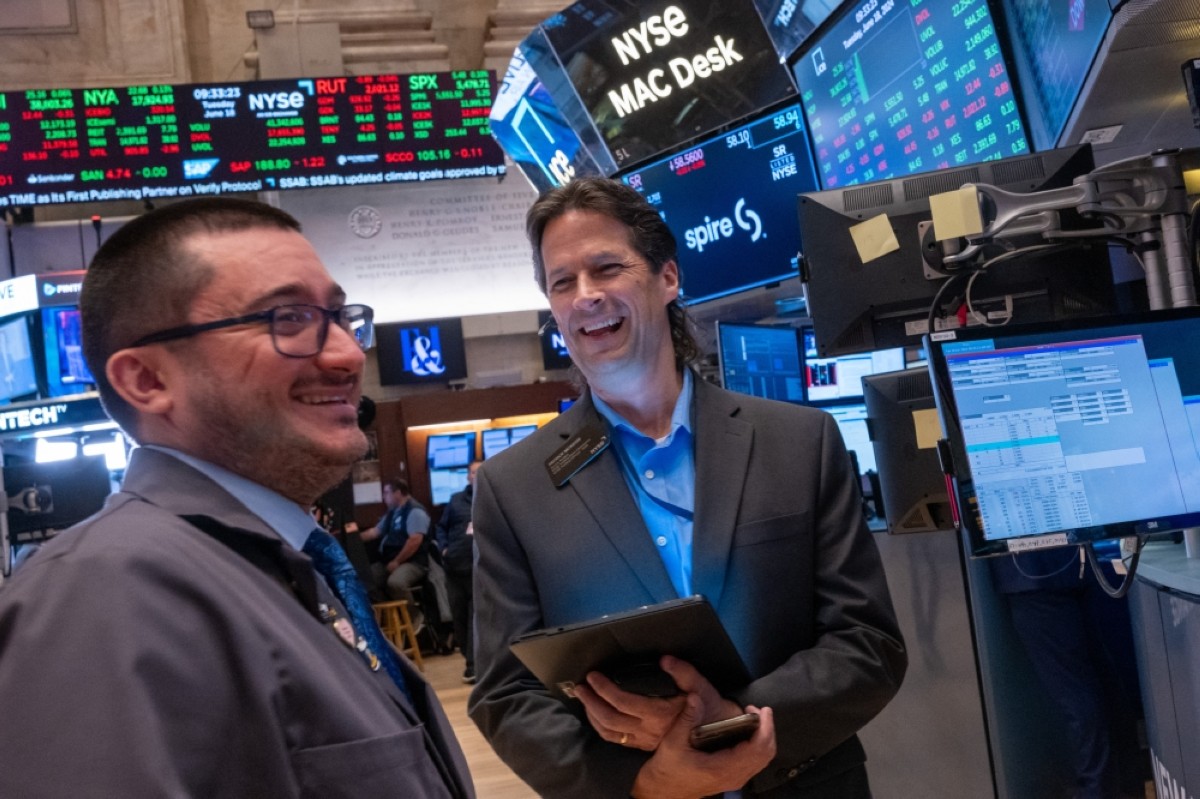2024 bull market leaves out US small caps, so far
NEW YORK: A famous aphorism holds that a “rising tide lifts all boats,” but small capitalization equities are still waiting for a boost from the 2024 bull market on Wall Street.

NEW YORK: Traders work on the floor of the New York Stock Exchange (NYSE) in New York City. -- AFP.
While the S&P 500, which is comprised of larger companies, has piled on more than 17 percent so far this year, the small-cap Russell 2000 has risen a scant 0.4 percent.
Market watchers point to lofty US interest rates - at 22-year highs - as one factor behind the yawning gulf in fortunes, given that smaller companies typically borrow more than larger peers because they are less profitable. Smaller equities “tend to get hurt more by the higher rates,” said Sam Burns, chief strategist at Mill Street Research. “I think it’s causing a big divergence in earnings, which then shows up in the relative returns.”
But that dynamic also means that small cap equities could be poised to prosper if the Federal Reserve pulls the trigger and cuts interest rates soon. A Fed interest rate cut in September could be the “first catalyst” for small caps to take off, said Art Hogan of B Riley Wealth Management.
If that happens, “small caps can likely catch a bid in anticipation of the Fed cutting for the first time because, it tends to start a pattern of more cuts and lower interest rates,” Hogan said. Futures markets currently project two interest rate cuts in 2024, one in September, the other in December.
Slowing economy?
But not all market watchers attribute small caps’ underperformance to high interest rates. “It’s more about what the economy is doing,” said Kim Forrest, chief investment officer at Bokeh Capital Partners, who describes conditions as “soft.” “It’s not even really tied to interest rates, because the companies certainly aren’t going to borrow for expansion,” she said.
CFRA Research’s Sam Stovall considers high interest rates a reason for the initial lagging performance of small cap stocks. But the stocks “did not tend to skyrocket shortly thereafter because of concern of an economic slowdown,” he said. Burns notes that a disproportionate share of the market’s advance in 2024 has been enjoyed by large technology companies leading the generative artificial intelligence business, adding that the biggest companies are the best positioned to monetize advances.
Technology “is a much bigger proportion of the S&P 500 than it is for, say, the Russell 2000,” Burns said. “And even within the tech sector, I think the large caps are still doing better than the smaller cap technology companies on average.” Forrest agrees, saying of “unloved” stocks in her portfolio, that “fundamentally, there’s nothing wrong with them, other than they’re not Nvidia.”
Market participants also note the rising influence of exchange traded funds, or ETFs, which account for some $8 trillion held in US markets. These investment vehicles are largely comprised of large cap companies. Market watchers also see a bias in sentiment towards larger companies, even outside of tech. “Big banks have gotten bigger,” notes Burns, who sees multiple industries where smaller players “are struggling or just can’t keep up.” — AFP.











